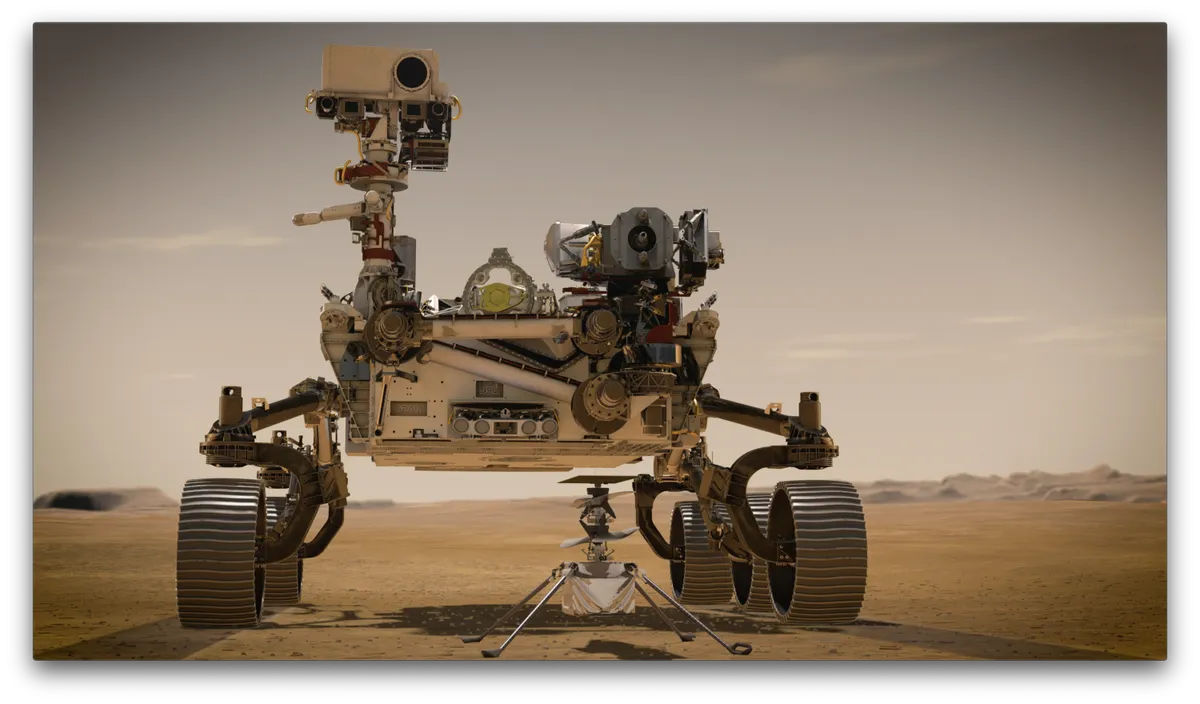NASA’s longest-running Martian orbiter, Mars Odyssey, has captured a dramatic, ethereal image of a 20km-tall volcano towering above a sea of clouds on Mars.
The star of the show is Arsia Mons, the southernmost of three volcanoes that make up the Red Planet's Tharsis Montes mountain range.
More on Mars exploration

NASA/JPL-Caltech
This is the first time a volcano on Mars has been photographed from the planet's horizon, giving us a perspective similar to images of Earth captured from the International Space Station.
Might we one day have a space station orbiting Mars? If so, this is what its inhabitants might see.

Ice clouds on Mars
The scene isn’t just volcanic drama; it’s also a key piece of data for scientists.
In the image, Mars Odyssey has captured water ice clouds swirling around Arsia Mons in the early morning light.
These clouds form as cold Martian air is forced up the volcano’s slopes, cooling rapidly and condensing into visible vapour.
The phenomenon intensifies during Mars' aphelion, which is the point in its orbit when it's furthest from the Sun.
When this happens, a spectacular belt of clouds known as the 'aphelion cloud belt' stretches across the Martian equator.
In Odyssey's image, Arsia Mons is seen poking majestically through that belt.

Arsia Mons, the mega Martian mountain
Arsia Mons towers 20km (12 miles) above the surface of Mars, which is more than twice as tall as Mauna Loa, Earth’s tallest volcano when measured from its base on the seafloor.
The Tharsis region, home to Arsia Mons and its volcanic siblings, includes some of the largest volcanic structures in the entire Solar System.
Notably Olympus Mons, the largest and tallest volcano in the Solar System.
Arsia Mons is the cloudiest of the three giants that make up Tharsis Montes, making it a prime target for planetary scientists wanting to learn more about Mars's atmosphere.

Two decades in orbit
Mars Odysses launched in 2001 and is still going strong.
In 2023, it began rotating 90° mid-orbit to capture high-altitude, horizon-facing images with its THEMIS (Thermal Emission Imaging System) camera.
This enables planetary scientists to observe seasonal changes in Mars's atmosphere, which is key for understanding weather patterns and planning future missions.
If we're ever to set human feet on Mars, data like this is invaluable in terms of keeping crew safe.
"We’re seeing some really significant seasonal differences," says NASA planetary scientist Michael D. Smith.
"It’s giving us new clues to how Mars’ atmosphere evolves over time."
What's more, the THEMIS camera can peer beneath the surface using infrared light to locate buried water ice.
Water would be a valuable resource for any crewed base on Mars, as it can be used as drinking water, but could also potentially provide oxygen or even be used as rocket propellant.
So while this image of Arsia Mons feels like a postcard from another world, it’s also a scientific treasure trove, as well as a glimpse into the future of what Mars explorers might see with their own eyes one day.
"We picked Arsia Mons hoping we would see the summit poke above the early morning clouds," says Jonathon Hill of Arizona State University in Tempe, operations lead for Odyssey’s THEMIS instrument.
"And it didn’t disappoint."
